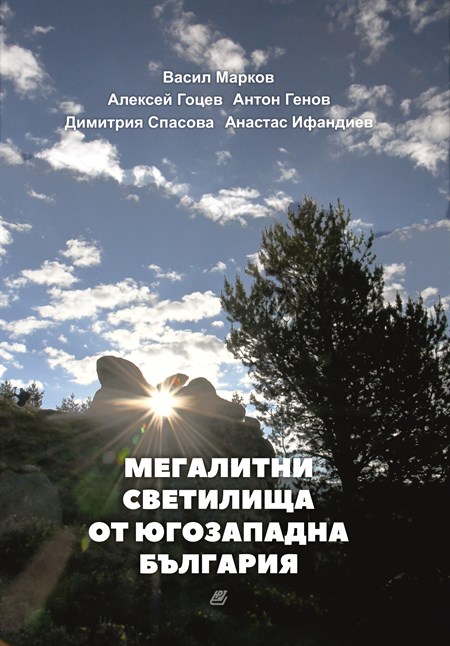
Summary
The collective scientific monograph
"Megalithic Sanctuaries in Southwestern Bulgaria" contains results
of over twenty years of field research in the mountains of
Southwestern Bulgaria. Many places have been documented during the
expeditions. These places have served as areas of cult or places
with a ritual function i.e. they were conceived and turned into a
sacred site or a sanctuary. As authors of the collection and
specialists in the field, we are far from thinking that it is
possible to include everything on the topic in a single book.
However, we still dare to say that the collection "Megalithic
Sanctuaries in Southwestern Bulgaria" includes some of the most
important monuments in the region, which played an important role
in the past and today are still encyclopedic examples of defining
and recognizing the sacred space of ancient cultures and
pre-Christian communities. In general, these are natural phenomena
- peaks, cliffs, springs, which have traces left on them from the
visit and worship by the peoples who inhabited the mountains of
Southwestern Bulgaria before the arrival of the Romans.
The first three chapters of the
text are divided on a geographical basis and they could be a
suitable foundation for studying and exploring the sacred areas and
centers in the higher mountains Rila and Pirin, the little-known
network of sanctuaries in the Western Rhodopes and similar sites
along the Struma river. The collection presents one of the most
complete pictures of sacred spaces from Thracian times in
Southwestern Bulgaria and it is a logical continuation of the
expeditions along the Struma and Mesta rivers.
Moreover, the interdisciplinary
nature of this collection gives it a completeness that cannot be
achieved by classical archaeological research. This fact is
especially clear in the fourth chapter where through the prism of
ethnography and cultural anthropology are documented beliefs,
legends and perceptions preserved in the folk memory of local
communities. They create a complete image of sacred geography and
reveal how a space is conceived as sacred
An exceptional advantage of the
collection is the fact that in addition to documenting and
describing the rock-cut monuments, the fifth part of the text
engages with the problems of preservation and presentation of these
monuments to modern society. The complex nature of this type of
cultural heritage sites requires their specific presentation and
connection with the general picture of tangible and intangible
heritage displayed in museums. This "warm" connection between a
monument and a museum cannot be achieved without the use of modern
digital technologies.
Last but not least, this collection
can become a table book and guide for every lover of history,
nature and mountains of Southwestern Bulgaria, thanks to the added
catalog with many color illustrations and GPS coordinates of each
described object.